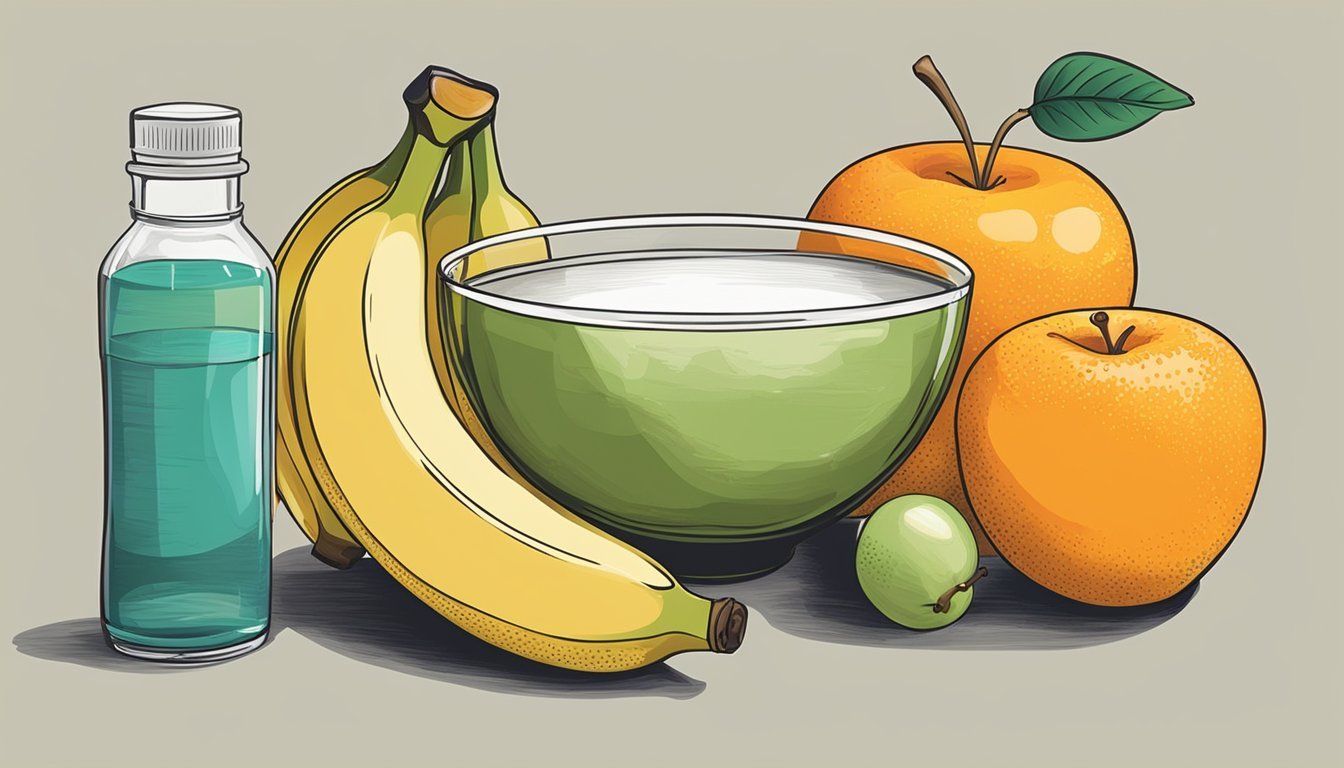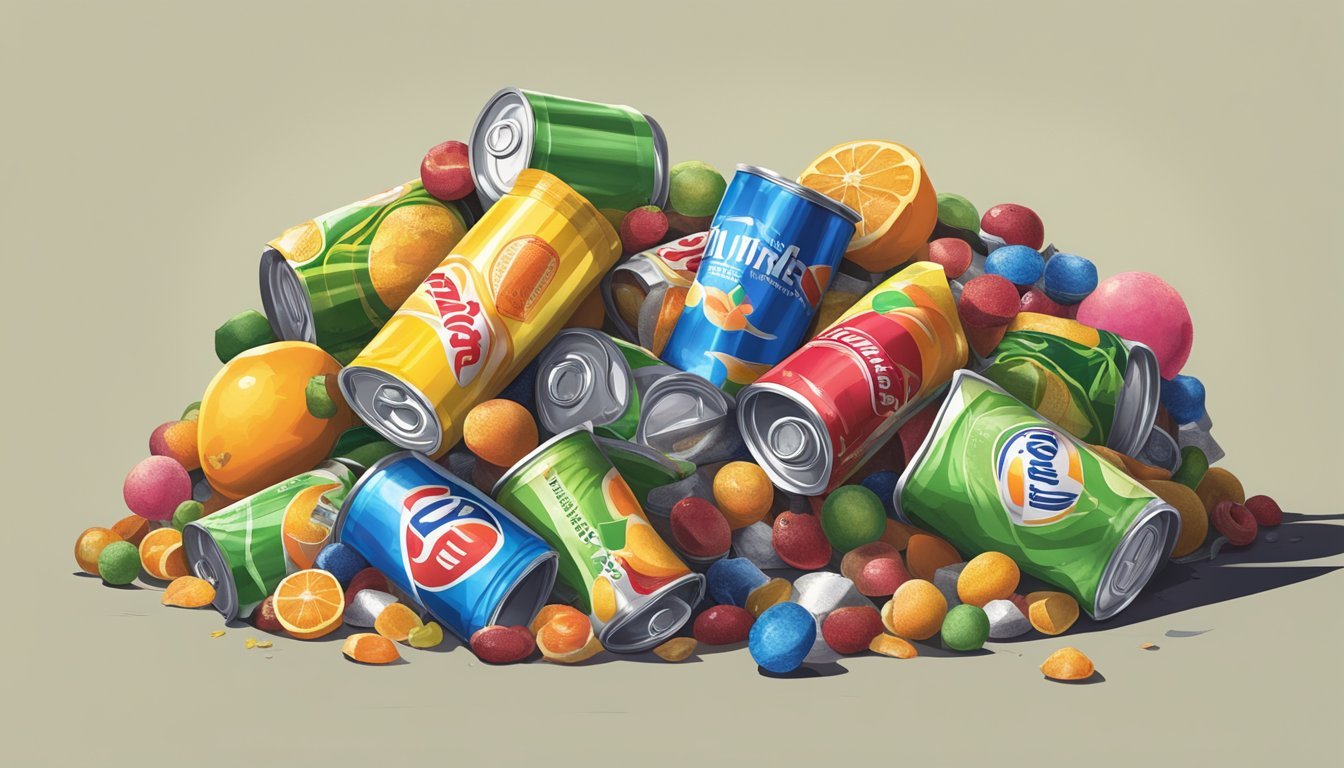Does Fructose Go Bad?
Understanding Shelf Life and Storage
Fructose, a type of sugar found naturally in fruits and honey and added sweeteners, has sparked discussion about its impact on health and shelf life. When it comes to its shelf life, fructose does not go bad in the conventional sense. Unlike perishable food items, dry fructose remains stable and effective for a long period if stored in a cool, dry place.
The growing consumption of fructose in the form of high-fructose corn syrup and other sweeteners has prompted health concerns. High intake of added fructose might contribute to conditions like obesity, diabetes, and heart disease. Some studies suggest excessive fructose affects blood lipids and could lead to insulin resistance.
Despite the concerns, it's crucial to differentiate between natural fructose found in fruits and added fructose. Fruits provide essential nutrients and fiber, playing a beneficial role in a balanced diet. Controlling the intake of added sugars can help mitigate potential health risks while still enjoying the natural sweetness and nutritional benefits of fruits.
Understanding Fructose
Fructose, a monosaccharide sugar, is present in many foods including fruits, vegetables, and sweeteners like high-fructose corn syrup. It is important to understand its chemical structure, dietary presence, and the difference between natural and added forms.
Chemical Structure and Sources
Fructose is a simple sugar, also known as a monosaccharide. It has the same chemical formula as glucose (C6H12O6) but differs in structure.
This sugar is naturally found in fruits like apples and pears, vegetables like carrots, and sweeteners such as honey and agave syrup. It is the sweetest naturally occurring carbohydrate.
Together with glucose, it forms sucrose, a disaccharide.
Fructose in the Diet
Fructose is consumed from various sources like fruits, vegetables, and added sugars. Natural sources include whole fruits, vegetables, and honey.
Processed foods and beverages, like sodas and fruit juices, often contain high-fructose corn syrup. This sweetener has higher fructose content than corn syrup and table sugar (sucrose), impacting overall intake.
Moderate fructose from natural sources does not pose significant health issues.
Natural vs Added Fructose
Natural fructose comes from whole foods like fruits and vegetables. These contain fiber and nutrients that aid digestion and health.
Added fructose, found in sweeteners like high-fructose corn syrup and agave syrup, is used in processed foods. The lack of fiber and high intake can lead to metabolic issues.
It's crucial to distinguish between the health impacts of natural and added fructose for better dietary choices.
Health Implications of Fructose
Fructose consumption has been linked to various health outcomes affecting obesity, diabetes, cardiovascular health, and other potential risks. Addressing these effects requires a close look at how fructose impacts the body's metabolism and its role in different medical conditions.
Fructose Metabolism
Fructose is primarily metabolized in the liver. Unlike glucose, which is used by nearly every cell, fructose is mainly processed by liver cells.
This can lead to the production of triglycerides, which raises the risk of nonalcoholic fatty liver disease. High fructose intake can increase uric acid, blood pressure, and insulin resistance, all of which are associated with metabolic disorders.
Fructose and Obesity
High fructose consumption has been linked to obesity. Fructose sweetens many processed foods, leading to high-calorie intake.
Unlike glucose, fructose does not induce a strong insulin response or promote satiety, contributing to overeating. This excess consumption stores more fat, particularly in the abdominal region, raising the risks associated with type 2 diabetes and metabolic syndrome.
Fructose and Diabetes
Fructose has a significant role in the development of type 2 diabetes. Excess fructose can lead to insulin resistance, where cells become less responsive to insulin.
This resistance can elevate blood sugar levels, contributing to diabetes. Moreover, high fructose diets often correlate with increased abdominal fat, further exacerbating insulin resistance and the prevalence of type 2 diabetes.
Fructose and Cardiovascular Health
High fructose consumption impacts cardiovascular health. One of the main concerns is the increase in triglycerides and LDL cholesterol levels, leading to higher risks of cardiovascular disease.
Fructose also promotes inflammation and may cause elevated blood pressure, both of which are factors in developing heart conditions. Nonalcoholic fatty liver disease is another risk, associated with high fructose intake that also affects the heart.
Other Potential Health Risks
Beyond the primary issues, fructose poses several additional risks. Chronic high intake is linked to nonalcoholic steatohepatitis, liver cancer, and even cirrhosis due to persistent liver damage.
There are concerns about the role of fructose in certain cancers, such as colorectal cancer. High fructose levels might also lead to increased deposition of fat in the liver, raising the risk of liver-related diseases.
Fructose and Diet
Fructose plays a significant role in diet, impacting everything from weight management to overall health. Understanding recommended intake, its role in diet, and how to balance it with other foods is essential for maintaining a healthy lifestyle.
Recommended Fructose Intake
Health guidelines often recommend moderate fructose consumption, especially from natural sources like fruits and vegetables. The American Heart Association suggests limiting added sugar intake to about 25 grams per day for women and 36 grams for men. Most of this added sugar in processed foods comes from high-fructose corn syrup (HFCS).
Fruits and vegetables provide a healthier fructose source since they also contain fiber, vitamins, and minerals. While they contribute to fructose intake, the nutritional benefits outweigh potential risks. Choosing whole fruits over processed foods can help manage fructose consumption effectively.
Role in Weight Management
Fructose can influence weight management due to its unique metabolic pathway. Unlike glucose, which is metabolized throughout the body, fructose is primarily processed in the liver. Excessive fructose consumption, particularly from HFCS, can lead to increased fat production and storage, contributing to weight gain.
Fructose can impact appetite regulation, potentially leading to overeating. Foods high in fructose may not trigger the same satiety signals as other carbohydrates, making it easier to consume more calories. Incorporating physical activity and exercise helps mitigate these effects, improving overall weight management.
Balancing Fructose with Other Foods
Balancing fructose intake involves integrating a variety of nutrient-dense foods. Whole fruits and vegetables should form the foundation of a diet, offering fiber that aids in digestion and helps control blood sugar levels. Foods rich in fiber also create a sense of fullness, thereby reducing the risk of overeating.
It's crucial to limit consumption of sugary drinks and processed foods high in HFCS. Pairing fructose-rich foods with proteins and healthy fats can stabilize blood sugar levels and prevent spikes. This balanced approach can help maintain energy levels and support long-term health goals.
Stability and Storage of Fructose
Fructose, a simple sugar found in fruits, honey, and high-fructose corn syrup, has specific requirements for stability and storage to maintain its quality. Understanding these factors is essential to ensure fructose retains its sweetness and nutritional value over time.
Preservation of Sugars
Fructose is chemically stable when kept dry and cool. Moisture can lead to crystallization or degradation, altering its taste and functional properties. Thus, keeping fructose in an airtight container prevents moisture absorption.
Like other sugars such as table sugar, exposure to light and air should also be minimized. Being hygroscopic, fructose readily absorbs water from the environment, making it crucial to store it in dry places.
Shelf Life and Degradation
The shelf life of fructose, including high-fructose corn syrup, depends on storage conditions. When stored correctly, fructose can last indefinitely without significant deterioration.
Degradation can occur when fructose is exposed to high temperatures or moisture over extended periods. This can result in a decrease in sweetness and potential formation of by-products. Ensuring optimal storage conditions prevents these issues and maintains fructose’s efficacy.
Proper Storage Techniques
To enhance the longevity and stability of fructose, it should be stored in a cool, dry environment. Use sealed containers to protect it from moisture and air exposure. Labels should indicate the storage date to track freshness.
For industrial uses, such as in food manufacturing, proper inventory management techniques are essential. Keep fructose away from heat sources to avoid potential degradation. By adhering to these guidelines, fructose can be stored effectively, preserving its quality and sweetness for extended use.
Consumer Guidance on Fructose Products
Understanding fructose in foods can be essential for maintaining a balanced diet and managing conditions like fructose malabsorption. Knowing how to read food labels and choose suitable alternatives can help minimize health risks.
Label Reading and Fructose Content
Reading food labels is crucial. Look for added sugars such as high-fructose corn syrup and agave syrup, as these can significantly increase fructose intake. Total sugars listed on labels include naturally occurring and added sugars. Checking the ingredients can reveal hidden sources of fructose.
Identify products low in fructose by comparing carbohydrate and sugar content. For example, foods with "no added sugars" often have lower fructose levels. Fruits and vegetables naturally contain fructose, but their overall health benefits usually outweigh the downsides.
Choosing Low-Fructose Alternatives
Selecting low-fructose alternatives can help manage intake. Opt for whole foods rather than processed items, as these often have fewer added sugars. For sweeteners, consider using alternatives like stevia or xylitol, which contain no fructose.
When choosing fruits, those with lower fructose content such as berries and citrus fruits can be better options. Avoid excessive consumption of high-fructose foods like dates, figs, and honey. Limiting sugary beverages and snacks can also reduce fructose intake and help maintain a healthy weight, minimizing the risk of conditions linked to high sugar consumption.
Understanding Fructose Malabsorption
Fructose malabsorption occurs when the body has difficulty absorbing fructose in the small intestine, leading to symptoms like bloating and diarrhea. Individuals with this condition must be mindful of fruit sugar in their diet.
Low-fructose dietary choices are essential for managing symptoms. Avoiding high-fructose foods and beverages can alleviate discomfort. Consulting with a healthcare provider can provide personalized advice and testing to confirm fructose malabsorption. By identifying safe food options, individuals can improve their diet and overall well-being.
Impact of Fructose Consumption on Society
Fructose consumption has far-reaching effects on public health, economic burdens, and ongoing educational and policy initiatives. It is linked to several chronic diseases and has implications for both healthcare systems and societal health trends.
Societal Costs of Fructose-Related Diseases
High fructose intake is associated with elevated risks of obesity, type 2 diabetes, heart disease, and certain cancers. These conditions lead to increased healthcare costs and reduced productivity.
In the Western diet, the prevalence of obesity and metabolic syndrome has stabilized at high levels, prompting concerns among health experts. Cardiometabolic risk associated with fructose-rich diets places a significant strain on healthcare systems.
Healthcare costs for managing fructose-related diseases are rising, affecting both individuals and society. Investments in preventative measures and treatment are essential to mitigate these financial burdens.
Fructose Consumption Trends
Fructose consumption has surged due to the popularity of sugar-sweetened beverages and processed foods. Studies indicate that high intake starts early, particularly affecting adolescents.
In Germany, the prevalence of overweight and obesity among children and adults highlights the urgent need for effective interventions. Similar trends are observed globally, emphasizing the importance of monitoring and moderating fructose consumption.
The American Heart Association recommends limiting fructose intake as part of broader dietary guidelines to reduce the risk of chronic disease. Public awareness and adherence to these guidelines remain challenges.
Educational Efforts and Public Health Policies
Public health education and policy play critical roles in addressing the impact of fructose. Educational programs aim to inform about the risks associated with high fructose intake and promote healthier dietary choices.
Public Health Policies have been implemented in some regions to regulate the marketing of sugary foods and drinks, particularly to children. Initiatives such as sugar taxes and clearer food labeling are designed to reduce intake.
Collaborations between health organizations and governments are essential. Policy development driven by scientific research ensures that interventions are evidence-based and effective.





